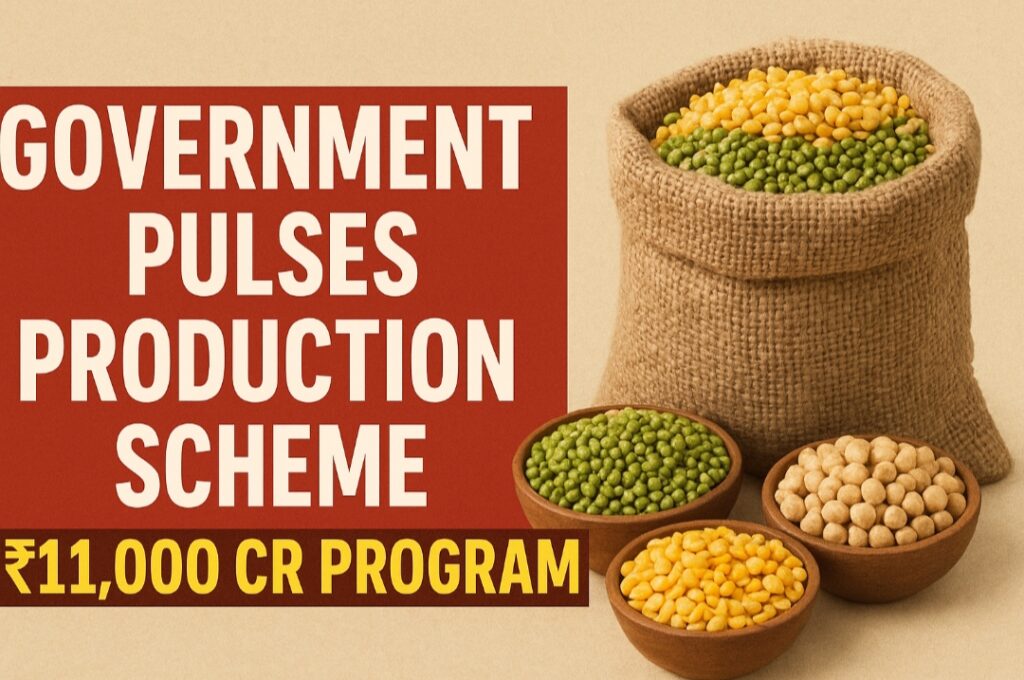Government Pulses Production Scheme: Rs 11,000 Cr Plan for Farmers
Have you ever wondered why India, despite being an agricultural nation, often ends up importing pulses? This is the exact issue the Indian government is targeting with its brand-new Pulses Production Scheme. Recently, the Cabinet approved a ₹11,000 crore six-year plan to boost pulses output and ensure that farmers get better returns through higher Minimum Support Prices (MSPs).
Why the Government Introduced the Pulses Scheme
Pulses are not just part of our daily diet—they are also crucial for nutrition security. But for decades, India’s demand for pulses has been higher than domestic supply. This gap leads to heavy imports, which increases food inflation. To tackle this challenge, the government rolled out a well-planned mission with two main goals:
- Boost domestic pulses cultivation and reduce dependency on imports
- Ensure farmers earn better income through MSP hikes for Rabi crops
Key Highlights of the ₹11,000 Crore Pulses Production Plan
1. Long-Term Six-Year Strategy
The scheme runs for six years, focusing on increasing the acreage and yield of major pulses like tur (arhar), urad, masoor, chana, and moong.

2. Higher MSPs for Rabi Crops
MSPs have been raised for Rabi crops including wheat, barley, gram, lentils, and mustard. This gives farmers greater financial security before the sowing season.
3. Financial Allocation of ₹11,000 Crore
The government has earmarked a massive budget to fund incentives, research, and seed distribution to make India self-sufficient in pulses.
4. Direct Benefits to Farmers
- Guaranteed minimum prices for crops
- Reduced dependence on middlemen
- Subsidies for high-quality seeds
- Support for irrigation and modern farming methods
How Farmers and Consumers Benefit
This scheme is a win-win for both farmers and consumers. Farmers gain higher incomes, while consumers get pulses at stable, affordable prices. It also strengthens India’s food security and reduces the country’s import bill.

Expert Insight: Why This Matters Now
With the rise in global food prices and supply chain disruptions, India’s dependence on imported pulses has become riskier. By increasing domestic production, the government is ensuring that both farmers and households are protected from global price shocks.
Conclusion: A Step Towards Self-Reliance
The Government Pulses Production Scheme is more than just an agriculture plan—it’s a step towards Aatmanirbhar Bharat (self-reliant India). Farmers will earn more, imports will reduce, and the nation will move closer to food security.
👉 What’s Next?
If you are a farmer, this is the right time to explore opportunities in pulses cultivation. And if you are a consumer, expect more stability in food prices in the coming years.
What do you think? Will this ₹11,000 crore plan truly make India self-sufficient in pulses? Share your thoughts in the comments below. 👇
Related Articles:
Written by Sourav verma – SV Linker

